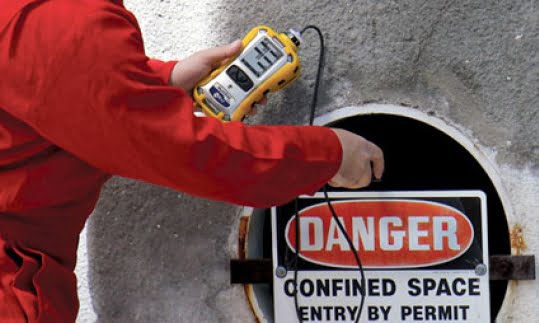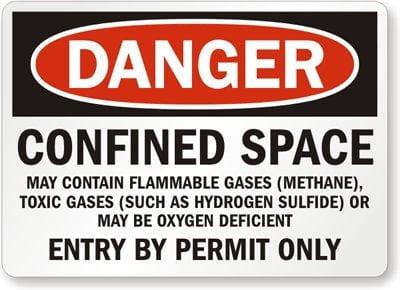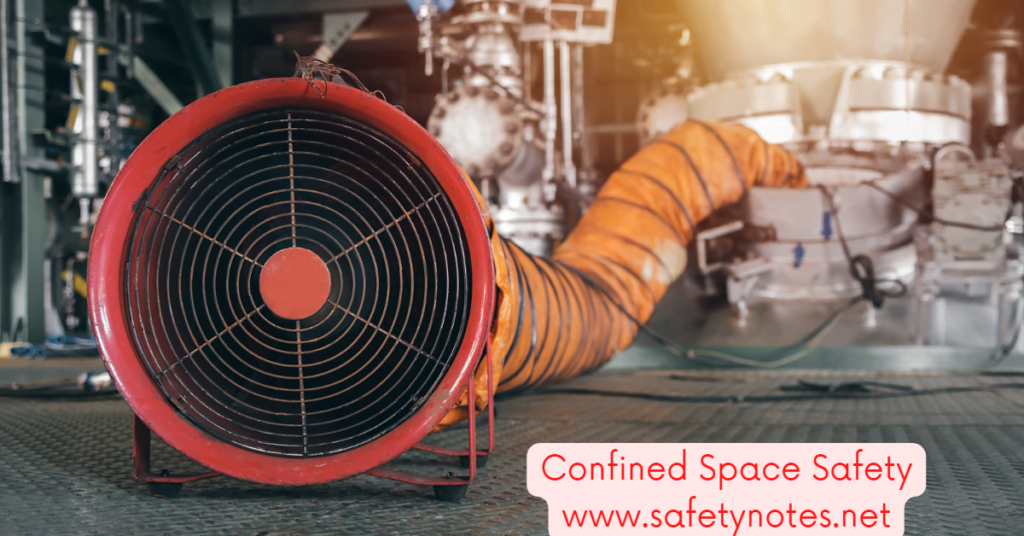Confined spaces can be some of the most dangerous working environments. To ensure the safety of workers, it is crucial to understand the hazards and take appropriate precautions. In this article, we will explore the definition and examples of confined spaces, the hazards they present, and confined space safety precautions necessary to mitigate risks.

Definition and Examples of Confined Spaces
A confined space is generally recognized as a space that:
- Has limited or restricted means of entry or exit.
- Is large enough for a person to enter bodily to perform work.
- Is not designed or configured for continuous human occupancy.
Examples of confined spaces include:
- Vessels, tanks, furnaces, underground pipelines, pits and manholes, sewers, and drains.
- Excavations deeper than 1.2 meters.
- Entry on floating roof tanks when the roof is 3 meters down.
- Air conditioning ducting and large diameter pipes.
Hazardous and Inert Atmospheres
A hazardous atmosphere exposes employees to the risk of death, incapacitation, impairment of self-rescue, injury, or acute illness. An inert atmosphere is surrounded and dispersed by nitrogen gas, with oxygen levels below 5%.
Isolation and Line Breaking
Isolation is the process of isolating a confined space from service and protecting it against the release of energy and material. This can be done through blinding, maligning, or removing sections of lines, pipes, or ducts, using a double block and bleed system, or by implementing lockout/tagout procedures for all energy sources.
Line breaking refers to the intentional cutting off or blinding of lines carrying flammable, toxic, corrosive, or inert materials that can cause injuries while working in confined spaces.

Confined Space Hazards
Some common confined space hazards include:
- Oxygen deficiency (less than 19.5%).
- Presence of toxic, corrosive, or hazardous materials (H2S, hydrocarbons, NH3, sulfur, and coke dust).
- Presence of flammable, combustible, explosive, or phosphoric materials (e.g., sludge).
- Restricted access – a limited number of entry/exit points (e.g., single manway).
- Restricted freedom of movement inside confined spaces (e.g., trays in towers and pipes in excavations).
- Falling/tripping hazards.
- Poor illumination, visibility, or communication.
- High temperature and humidity.
- Electrical, static, or radioactive hazards.
- Mechanical hazards (e.g., tank mixers, falling objects such as tools, refractory).

Confined Space Safety Precautions
To ensure worker safety in confined spaces, the following precautions should be taken:
- Obtain confined space entry authorization with the permit.
- Ensure positive isolation of the vessel through line breaking or blinding.
- Use a multi-lock system for electrical devices in confined spaces.
- Confined areas should be free of combustible or inert gases through purging or venting.
- Conduct gas testing to ensure the absence of toxic, flammable, or combustible gases.
- A valid confined space entry card is compulsory for workers.
- Provide personnel H2S gas monitors for the working crew.
- Have an attendant present with a confined space entry attendant sheet and communication device, such as a radio.
- Ensure proper illumination and lighting inside confined spaces with explosion-proof, 24-volt power supplies.
- Provide proper ventilation, either through natural means or with a fan.
- Display signboards at the entry.
- Wear appropriate personal protective equipment (PPE).
Frequently Asked Questions
Q: What are the hazards in confined spaces?
A: Hazards include oxygen deficiency, presence of toxic or hazardous materials, restricted access, restricted movement, falling hazards, poor visibility, high temperatures, electrical and mechanical hazards.
Q: What are some examples and definitions of confined spaces?
A: Confined spaces have limited or restricted means of entry or exit,are large enough for a person to enter bodily to perform work, and are not designed or configured for continuous human occupancy. Examples include vessels, tanks, furnaces, underground pipelines, pits and manholes, sewers, and drains, as well as excavations deeper than 1.2 meters and air conditioning ducting and large diameter pipes.
Q: What precautions should be taken for confined spaces?
A: To ensure worker safety in confined spaces, the following precautions should be taken: obtain confined space entry authorization with the permit, ensure positive isolation of the vessel through line breaking or blinding, use a multi-lock system for electrical devices in confined spaces, ensure confined areas are free of combustible or inert gases through purging or venting, conduct gas testing to ensure the absence of toxic, flammable, or combustible gases, provide a valid confined space entry card for workers, provide personnel H2S gas monitors for the working crew, have an attendant present with a confined space entry attendant sheet and communication device, ensure proper illumination and lighting inside confined spaces, provide proper ventilation, display signboards at the entry, and wear appropriate personal protective equipment (PPE).
Q: What is isolation in confined spaces?
A: Isolation refers to the process of isolating a confined space from service and protecting it against the release of energy and material. This can be done through blinding, maligning, or removing sections of lines, pipes, or ducts, using a double block and bleed system, or by implementing lockout/tagout procedures for all energy sources.
Q: What is inerting in confined spaces?
A: Inerting refers to the process of surrounding and dispersing an atmosphere with nitrogen gas, with oxygen levels below 5%. This creates an inert atmosphere, which can help mitigate the risk of hazardous atmospheres in confined spaces.
Q: What is a confined space?
A: A confined space is a space that has limited or restricted means of entry or exit, is large enough for a person to enter bodily to perform work, and is not designed or configured for continuous human occupancy.
Q: How long is a confined space entrant and attendant card valid?
A: The validity of a confined space entrant and attendant card will depend on the company’s policies and local regulations. Generally, these cards need to be renewed annually or every two years.
Conclusion
Confined spaces pose significant risks to workers, and it is crucial to take appropriate safety precautions to mitigate these risks. Understanding the definition and examples of confined spaces, the hazards they present, and the Confined space safety precautions necessary to ensure worker safety is essential. By following the tips and guidelines outlined in this article, employers can create a safe working environment for their employees.



very helpful and useful thanks
Why should we give intervals to workers in the confined spacesl
Dear Kofi Afriyie,
Workers in confined spaces should be given intervals to ensure their safety. Confined spaces are areas that are not designed for continuous employee occupancy and have limited means of entry and exit. Providing intervals to workers in confined spaces is essential for ensuring their health, safety, and well-being
Confined spaces can be hazardous due to limited access, poor air quality, and other potential dangers. Providing intervals allows workers to take breaks, rest, and recover from any physical or mental strain they may experience while working in the confined space. This can help prevent accidents, injuries, and other health problems.
I think it is very important to make sure continued monitoring of oxygen and toxic gases inside a confined space. And we should make sure that the gas detector is calibrated.